24 May Summertime Safety: Preventing On the Job Injuries
With the warmer weather and added sunshine come additional risks to your employees. Here’s what you can do to prevent on the job injuries.
Limit Sun Exposure
Ultraviolet B (UVB) rays penetrate human skin deeply and can cause some forms of skin cancer and cataracts. Consequently, employers need to pay special attention to worker protection while outdoors.
When possible, employers should schedule work outside of the hours of 10am to 2pm, when UV rays are most intense. UV radiation is an issue even on cloudy days and these rays can reach a worker directly or through reflection off light-colored materials and water.
If it is not possible to work outside of these hours, employers should ensure employees take frequent breaks away from the sun to re-hydrate. Drinking plenty of water, even when an employee does not feel thirsty, prevents dehydration and heat exhaustion.
Personal Protective Equipment
Supervisors must reinforce and monitor the use of PPE during hot weather. This equipment is often ignored, because it’s uncomfortable and hot when temperatures rise. However, it is also vital to safe job performance.
Supervisors must understand the signs of heat stress and how to respond accordingly. They’re often subtle at first, but increase dramatically and can threaten lives if not resolved quickly.
Humidity amplifies the effects of heat stress, so OSHA recommends companies with outdoor employees follow the heat index, which reflects risk more accurately than temperature alone.
Educate Employees
Educating employees is the best way to reduce risk. Here are a few ways to make them more aware of the dangers:
- Workers with fair skin and/or light hair are very vulnerable to UV radiation. Advise them to wear a minimum of SPF15 sunscreen.
- Employees on some drugs are also more vulnerable to UV radiation. Anti-inflammatories such as ibuprofen, sulfa drugs and antibiotics, and diuretics are just a few that can increase risk. Provide a list of drugs that can potentially increase risk so employees act accordingly.
- Workers using hard hats should cover their neck to prevent UV radiation.
- Sunglasses should provide 99 to 100 percent blockage of UVA and UVB rays.
- Small meals are a better choice during hot weather. Eating during breaks and drinking water frequently is preferable to a large meal at lunch.
- Workers should avoid diuretics such as caffeine, sugar, energy drinks, and alcohol before and during work. They draw water out of the body.
- Lightweight, loose, natural clothing in lighter colors or UV resistant fabrics are preferable when exposed to the sun. If workers wear coveralls, recommend 100% cotton beneath them.
Reduce Disease Risk
Employees working in natural landscapes run the risk of contracting diseases such as Lyme disease and West Nile virus. Train employees to follow these precautions to reduce risk:
- Wear light-colored clothing to detect ticks and mosquitos more easily.
- Tuck pant legs into socks or boots and ensure employees wear long-sleeved shirts and hats. Do not permit open-toed shoes.
- Recommend tick and DEET mosquito repellent to ward off insects.
- Advise employees to shower daily and to wash and dry their clothes using high heat.
- Remove ticks as soon as possible with tweezers.
- Avoid working during dusk or dawn when in mosquito-infested areas.
Improved workplace safety reduces insurance costs, improves employee retention, and reinforces your brand. Managing risk requires consultation, diagnosis, and proactive planning and the Gilbert’s Risk Solutions’ team can guide you. We’ve helped companies for over 160 years, and we’re here for you too.


No Comments